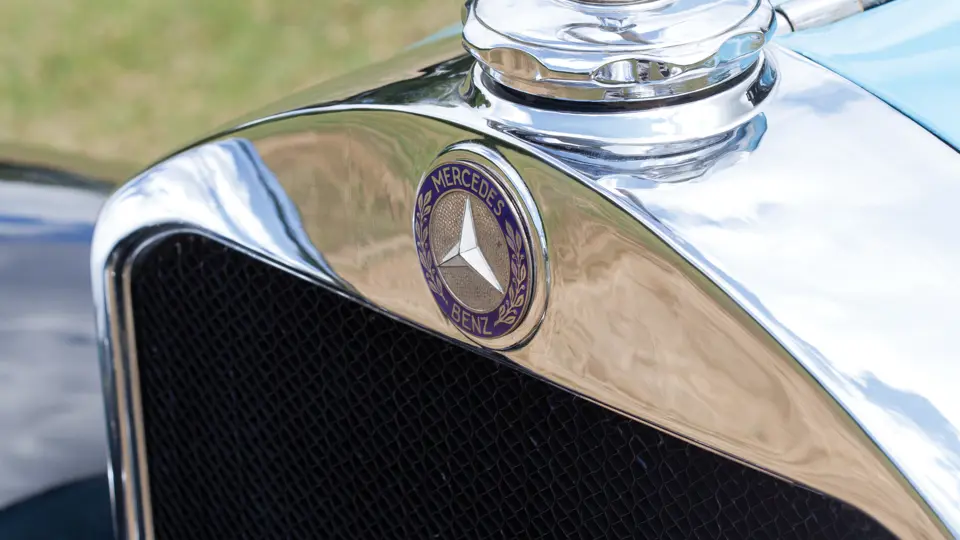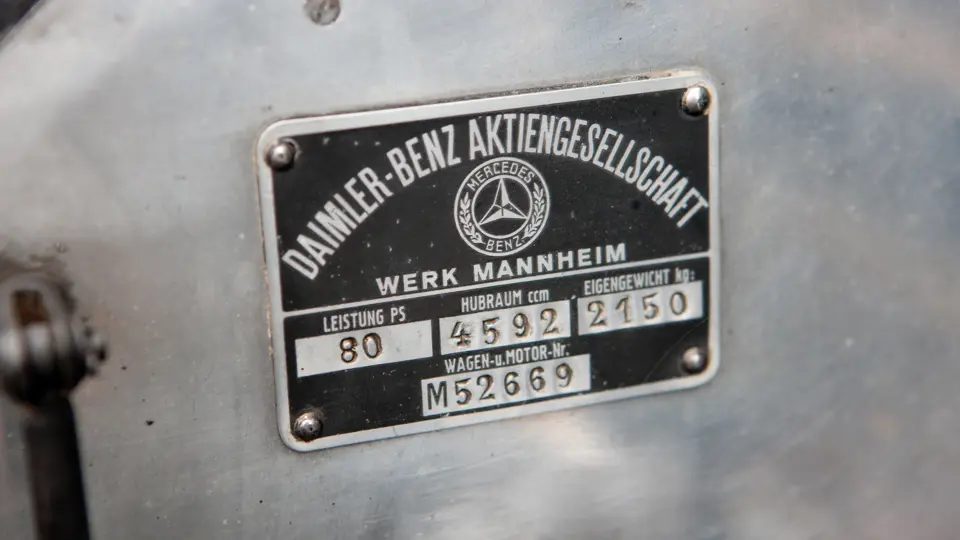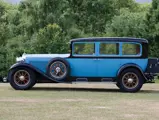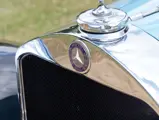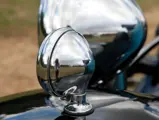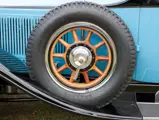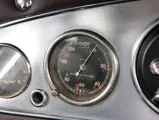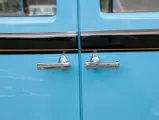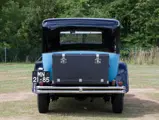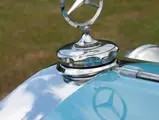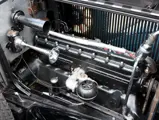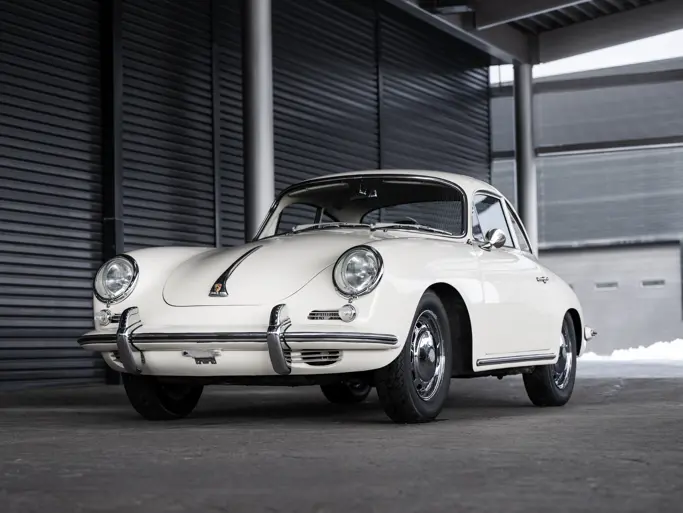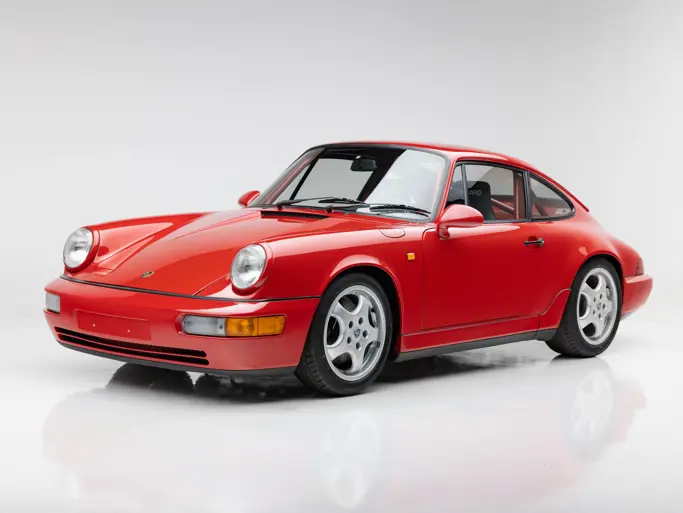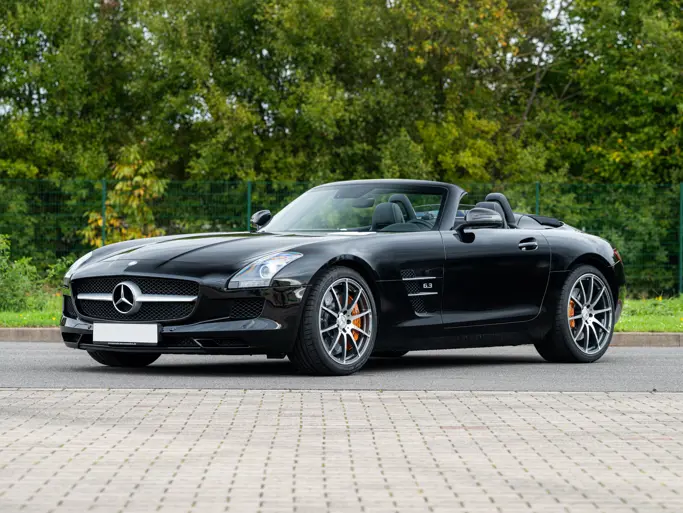18/80 hp, 4,622 cc L-head inline eight-cylinder engine, four-speed manual gearbox, solid front axle and underslung live rear axle with semi-elliptic leaf springs, and four-wheel mechanical drum brakes. Wheelbase: 3,430 mm
Prior to their 1926 merger, Mercedes and Benz were both known for sporting cars, so it was only natural that the post-nuptial hyphenated marque would continue in that tradition. And so it is that the SS and SSK cars and their 500 K and 540 K brethren come first to mind. Whilst the touring automobiles that continued to emanate from the Stuttgart stable through World War II were frequently forgotten.
In contrast to the sports cars, they had side-valve engines, flat radiators, and wood-spoke artillery wheels. They were named for German towns, with the smallest being Stuttgart and the mid-range being Mannheim, and they both had six-cylinder engines. Further up the line was the straight-eight W08 Nürburg, with either a 4,622- or 4,918-cubic centimetre engine on a 3,670-millimetre wheelbase, and at the top was the Type 770 Grosser Mercedes. From 1931, the Nürburg was re-named “500”, and built through until 1939. A 3,430-millimetre wheelbase version of the Nürnburg was also available; it was known as the 460 K (with the “K” meaning kurz, or short).
The first of the Nürburgs was designed by Ferdinand Porsche, in one of his last acts before leaving Daimler-Benz. Owing much to the earlier Horch 8, it had a high chassis and solid axles, giving it a rather old-fashioned look. Introduced in 1928, it was only mildly popular; therefore, it was replaced by a more modern low-chassis design by Hans Nibel the following year. Besides the saloon and cabriolet, limousines and Pullman limousines, which offered additional seating, were also available. The first formal “Popemobile”, a 460 presented by the company to Pius XI, was equipped with a central rear-compartment throne and a custom interior. His Holiness called it “a masterpiece of modern engineering”.
This handsome limousine is the shorter 460 K version. It is nicely set out in royal blue with black wings and belt moulding and straw coach lining that complements the varnished wood wheels. The chauffeur’s compartment is upholstered in brown vinyl, whilst the rear compartment is covered with tan broadcloth. A storage net is handily attached to the forward section of the rear headliner. The division partition has a crank-up glass window, and all windows, including the division, have privacy shades. The doors all shut well, and although the interior wood mouldings are not of mirror finish, they are pleasing to the eye.
Bosch headlamps display the star-and-laurel hallmark, and the car has dual external Bosch horns. These are aided by a French Cicca “Tenor” horn in the engine compartment. Dual side-mounted spares are fitted, as well as a rear-mounted trunk by Waldbauer, of Stuttgart.
Total production of the low-chassis 460 and 460 K came to 1,508 cars. This one is stately and solid and presents very nicely. The engine compartment and undercarriage, whilst not highly detailed, are clean and serviceable. This 460 K is deal for touring, and it is the perfect car to broaden a collection of Mercedes-Benz sports models.
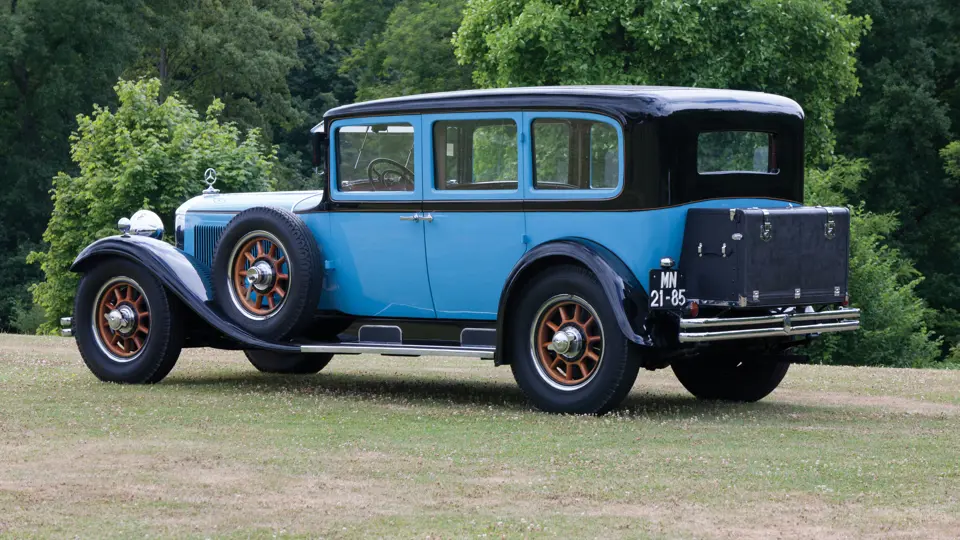




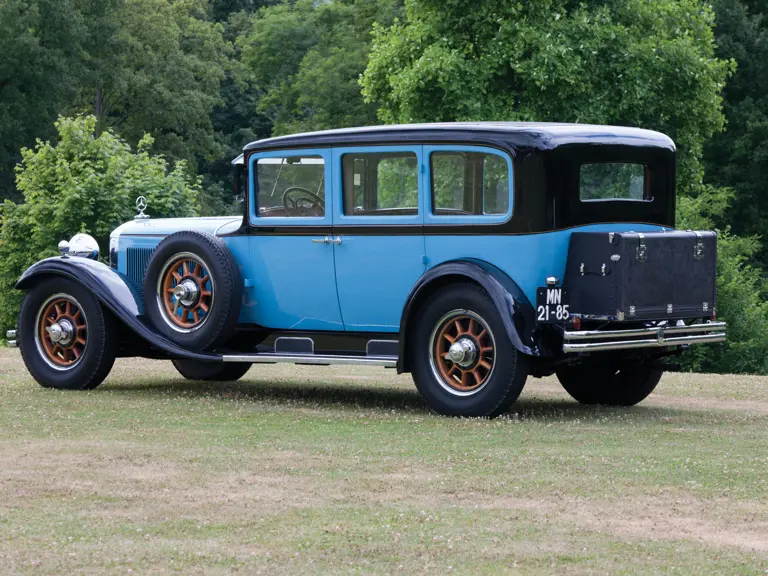
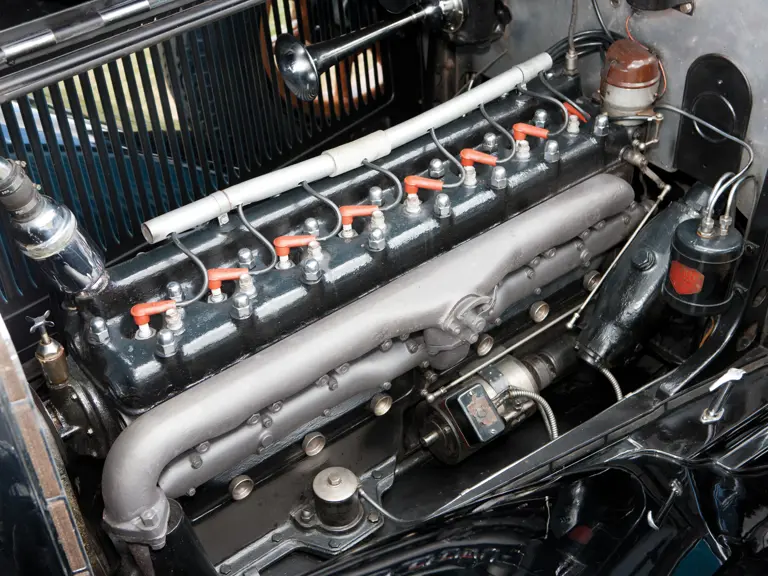
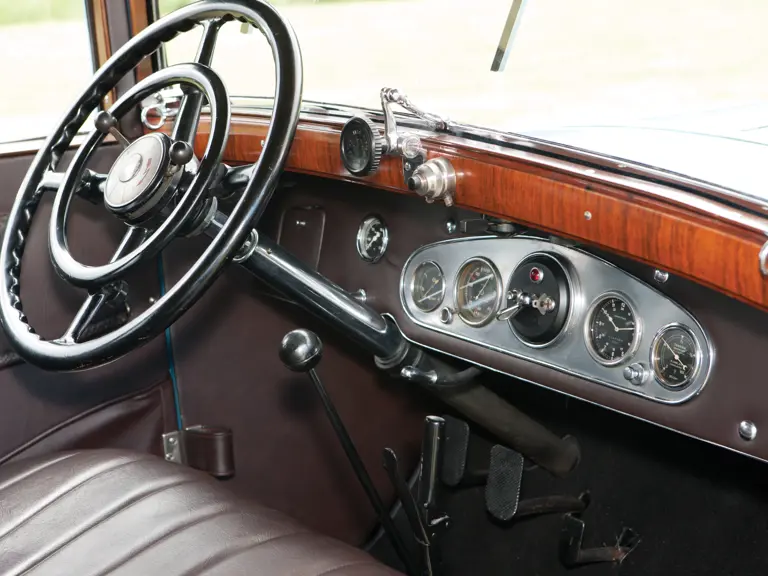

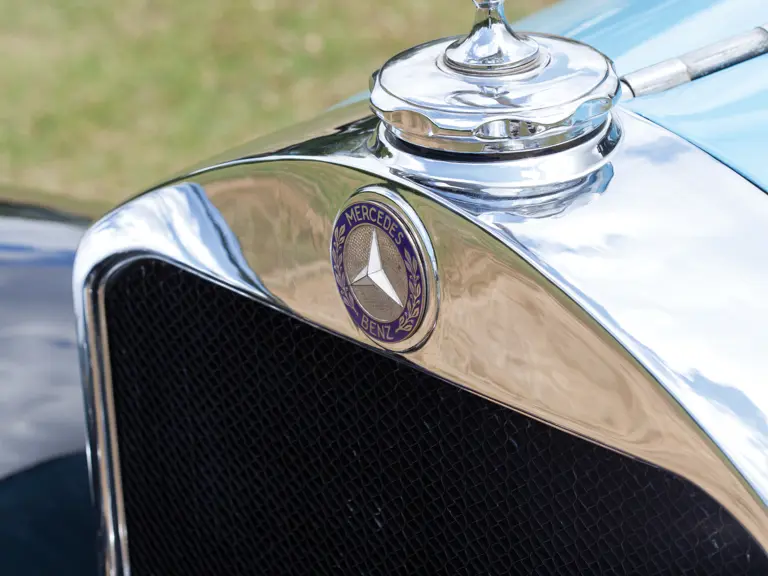
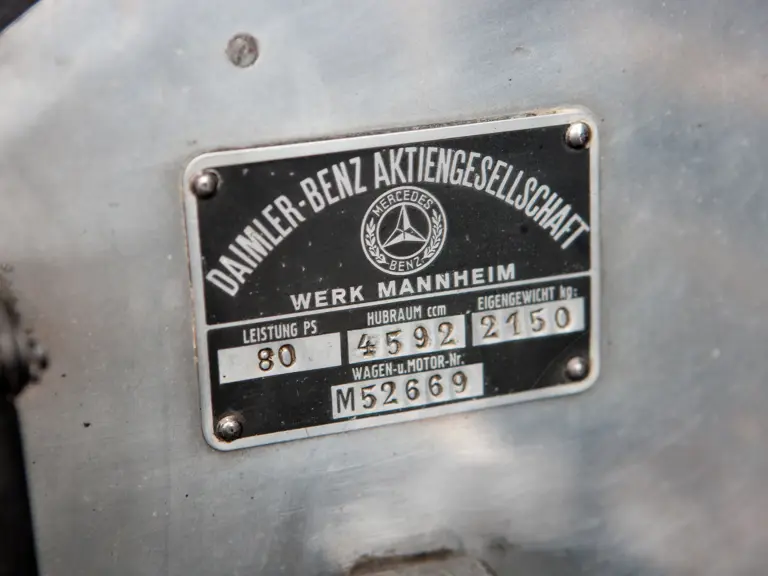
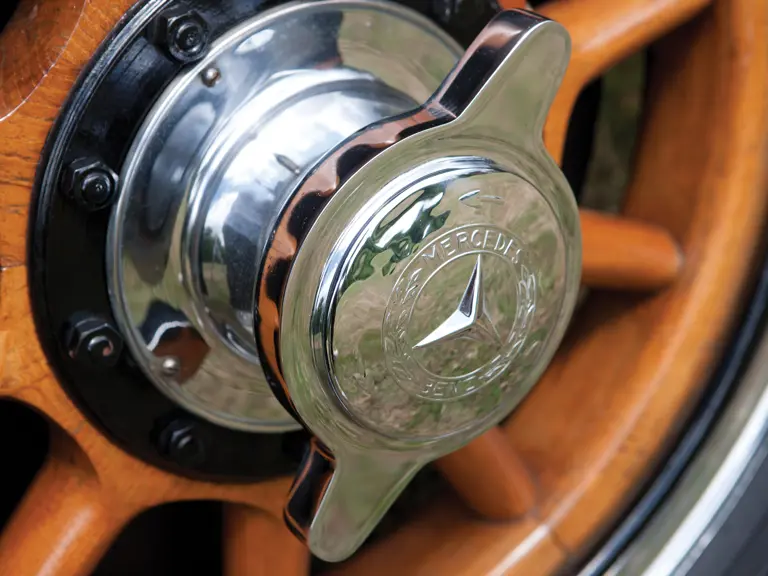

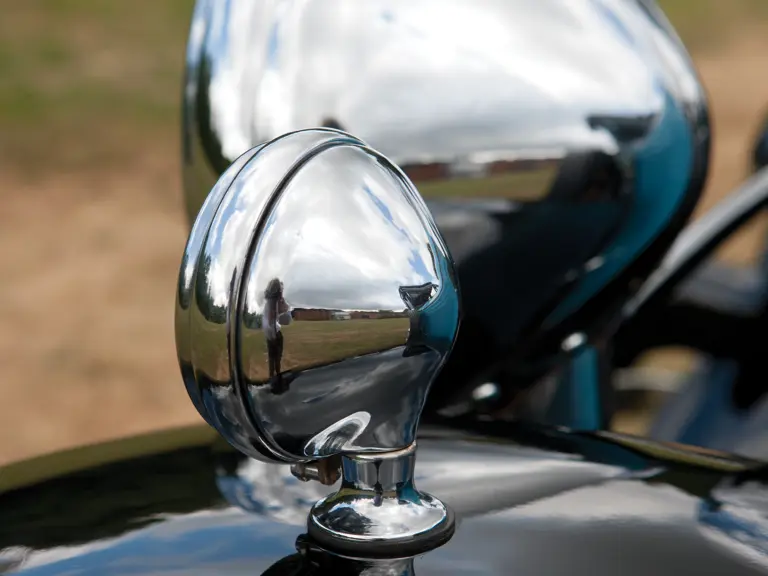
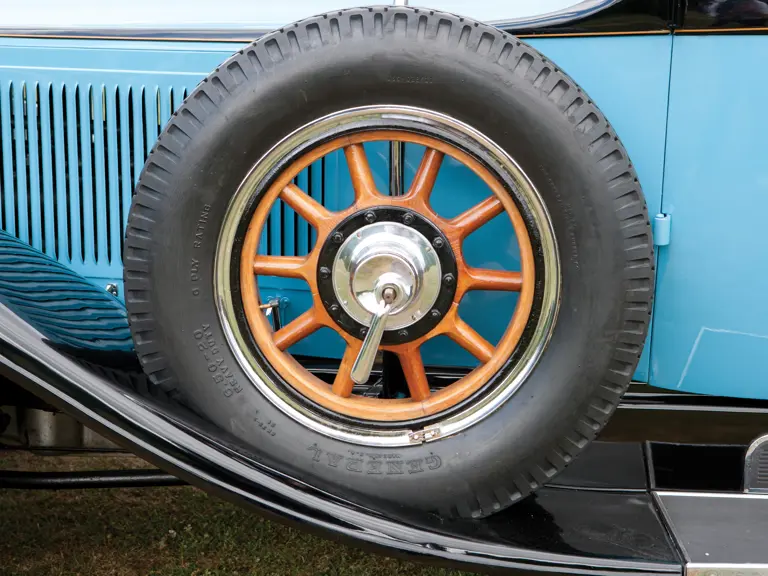
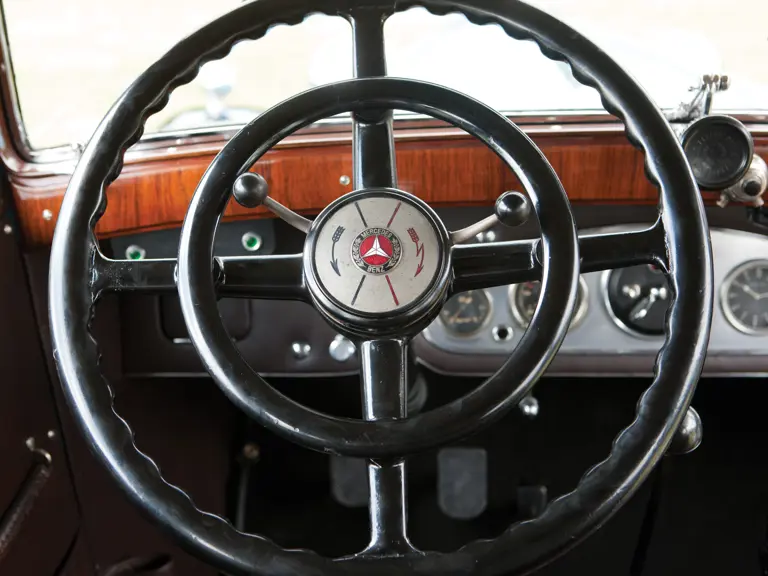
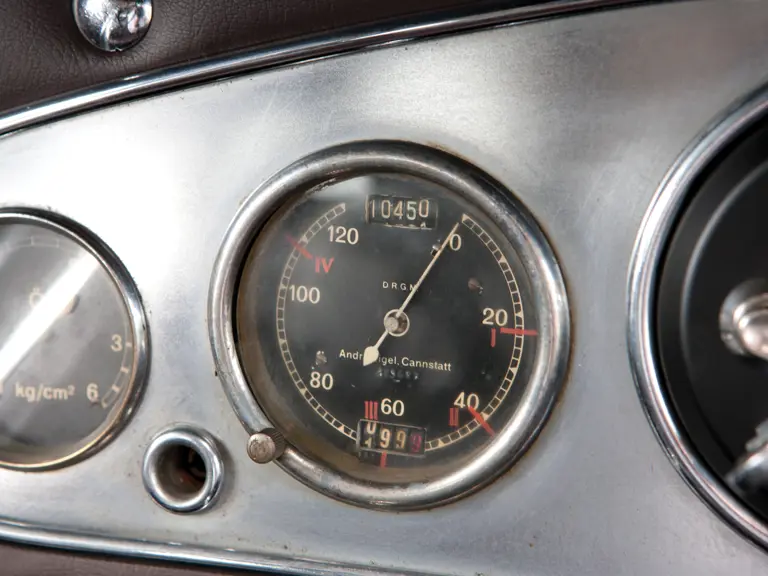
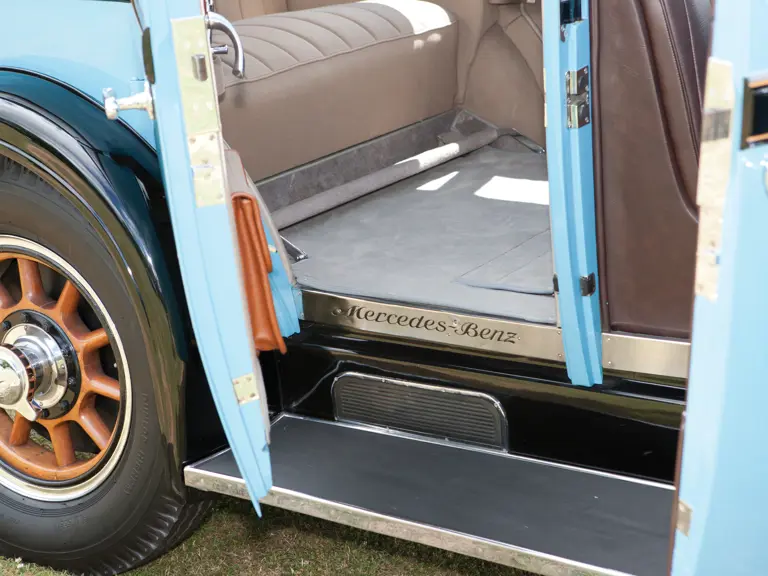


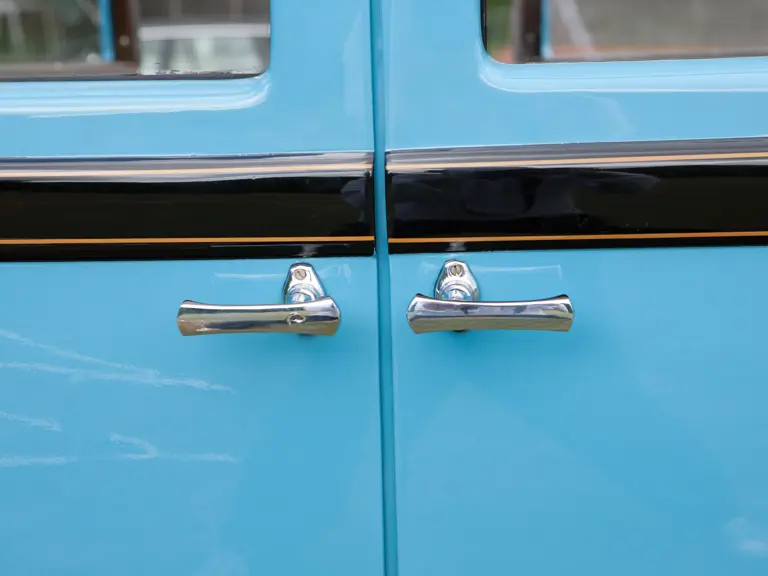
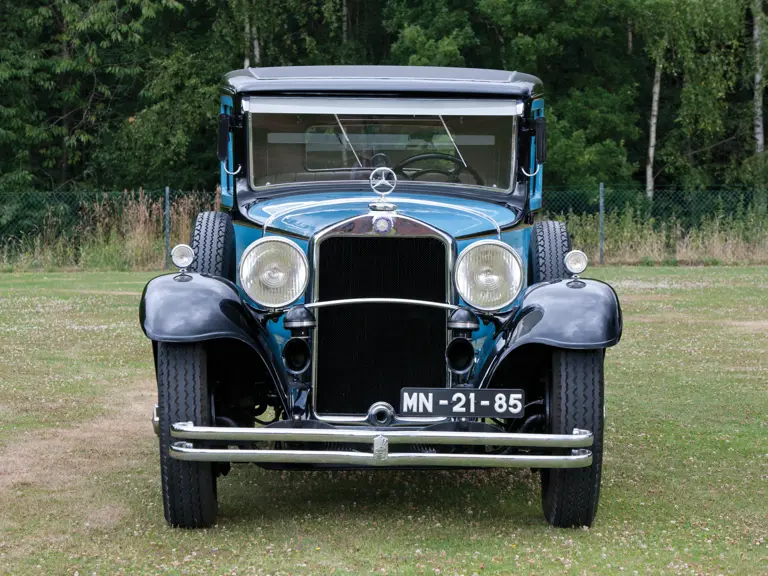
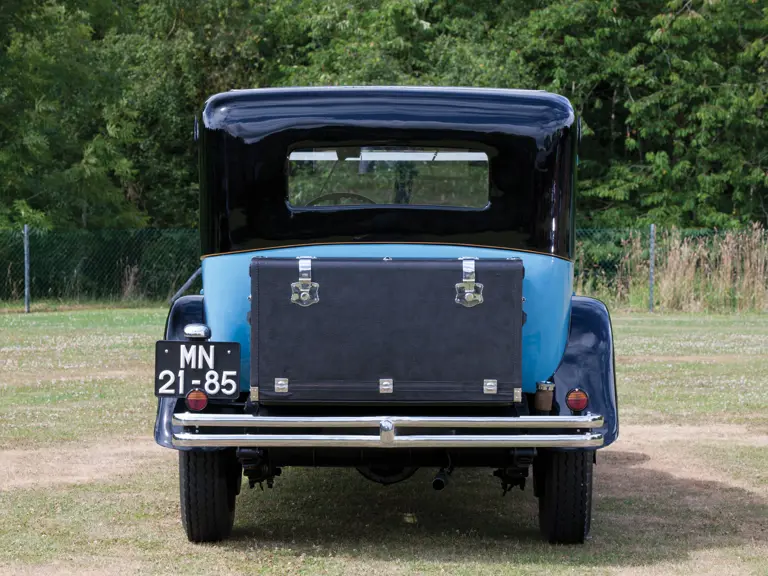
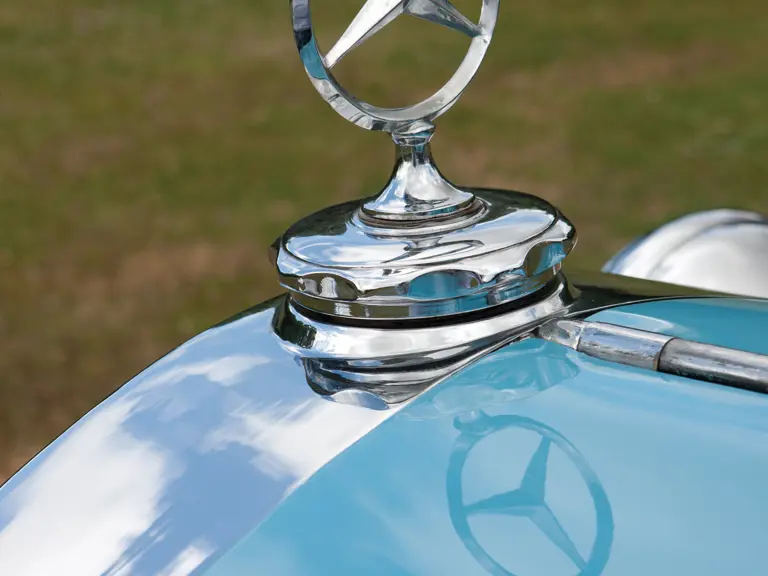
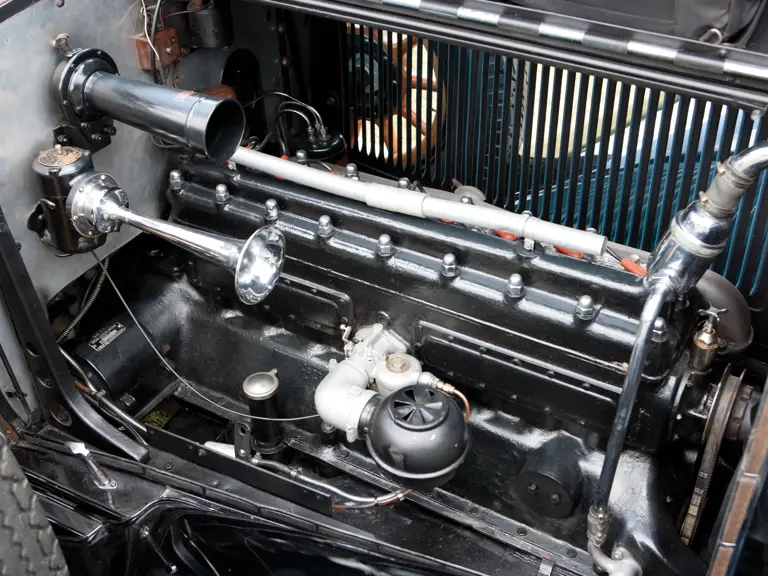

 | London, United Kingdom
| London, United Kingdom

